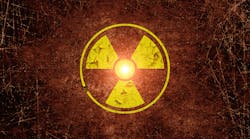X-ray safety: Are your processes what they should be for patients and staff?
Recently, I attended the annual conference of the Organization for Safety, Asepsis and Prevention (OSAP)—my mothership for all things infection prevention and patient safety. The following is a recap of the main points from an amazing presentation by Juan F. Yepes, DDS, on dental x-ray safety. I had so many takeaways from it that I wanted to share them.
In modern dentistry, radiographic examinations play a vital role in diagnosing and monitoring oral diseases. Dental radiographic examinations—including panoramic, cephalometric, and the more advanced 3D imaging cone beam computed tomography (CBCT)—are routinely required, and to date, there have been approximately 325 million procedures completed in the United States alone.1
Importance of dental radiation safety
Certified practitioners are responsible for always maintaining an absolute minimum of patient and employee exposure to radiation by taking all precautions necessary to safeguard the health and safety of those involved. Operators of dental x-ray equipment must be competent and understand the fundamental laws of radiation safety, as well as the health risks associated with radiation exposure. Unfortunately, dentistry is a business, and I have been asked to update radiographs based on increasing the day’s production. I find this to be unethical because updating radiographs should always be based on the patient’s needs and not capitalism.
Effective dosage and monitoring
Dental imaging procedures have a wide range of effective doses that compare radiological risk against their diagnostic value. Intraoral radiographs are the lowest at around 1.5 µSv, whereas panoramic radiography is between 2.7 µSv and 24 µSv. For CBCT, the effective doses are more significant and can vary even more, from 11 µSv to 1,073 µSv.
When patients refuse recommended services or screenings
Effects of cancer treatment on periodontal condition and oral health
Dental professionals must carefully select their imaging method and demonstrate that the benefits outweigh the danger of radiation exposure. Children are significantly more vulnerable to the carcinogenic effects of ionizing radiation than adults. Since they have a longer life expectancy to express risk, it is essential to take extra care when treating them.2 During the OSAP conference, Dr. Yepes asked the audience why any of us would ever take a panorex on a 4-year-old. As a hygienist, I don’t personally see many children, so I was a bit surprised to hear this was happening.
Dental professionals should inquire as to the pregnancy status of female patients of childbearing age. The dentist must choose radiological techniques that minimize embryonic or fetal exposure to radiation in pregnant patients.
Federal regulations for x-ray dosimetry in the US mandate monitoring all individual employees if they are likely to receive more than 10% of the allowable radiation limit of 5 rem, which is 0.5 rem. For pregnant employees, this limit is much lower at 0.1 rem.3
When an employee becomes pregnant, the American Dental Association recommends that they inform their employer immediately. Employees exposed to occupational radiation should wear radiation dosimetry badges to help establish a baseline. Since the allowable dose is much lower for pregnant women, they should be monitored continuously throughout their pregnancy.
The development of this surveillance should happen over a period of six to 12 months. In addition, the badges must be replaced monthly or quarterly, depending on the contract terms with the radiation dosimetry provider.
Keep the thyroid collar (but maybe not the lead apron)
The thyroid gland is one of the most radiosensitive organs. During dental x-rays, scatter radiation and sometimes the primary beam can put this area at increased risk. Using a shield, such as a thyroid collar, can significantly reduce thyroid skin exposure by 33%–84% in adults and 63%–92% in children.4 Protective equipment, such as a thyroid collar, is especially vital during occlusal radiographic examinations to minimize thyroid exposure.
Because of low gonadal exposure, we don't necessarily need lead aprons to reduce unnecessary exposure, but they do provide peace of mind for some patients.5 If using rectangular collimation with minimal radiation exposure, we can reassure our patients that they don't require an apron and are safe with just the thyroid collar. However, if using aprons, don't fold them; they must be correctly stored to maintain their levels of effectiveness. Additionally, routinely check for tears and cracks by performing a visual inspection at least once a year.
I have recently started using just the thyroid collar, and the only thing patients have said so far is, “Oh, so we don’t need the whole lead thing anymore?” I am always excited to share new research with my patients along with any advances in my clinical knowledge as a professional. To date, I have not received any pushback about not using the full apron.
Rectangular collimation
Although lead aprons can shield the wearer from scatter radiation, they do not adequately protect against the primary x-ray beam. Through rectangular collimation, it is possible to further reduce unnecessary exposure while improving the quality of radiographic images and diagnostic yield.6
Reducing the dose while increasing the image quality is possible due to decreased scatter radiation when keeping the beam size to the smallest required to scan the area of interest. It is also possible to reduce radiation dosage by up to five times with rectangular collimation compared to traditional circular collimation. Since x-ray beams diverge, increasing the distance reduces divergence on the patient, thereby minimizing the volume irradiated.
This method will soon be mandated in some states and will most likely trickle down to all states. As clinicians, we will have to adapt to taking radiographs and probably deal with cone-cuts and retakes until we adjust our technique. We will likely need to invest in new XCP instruments to fit the new rectangular collimator.
Panoramic bitewings
Traditional bitewings have long been preferred over the panoramic type due to their resolution and the ability to open the contacts. However, in recent years, dental professionals are becoming more receptive to using panoramic bitewings.
Thanks to emerging technologies, panoramic bitewings are becoming a preferred choice as they are more comfortable for patients, easier for staff to perform, quicker to take, and provide more diagnostic details. Even though radiation exposure increases, it is easier on the patient and minimizes infection control issues.7 Clinical judgments are necessary to select the best method for the patient.
Prescribing radiographs
The prescription of radiographs must be considered carefully after assessing the maximum diagnostic yield against minimum exposure to ionizing radiation. One of the best ways to control risk and minimize harm is to avoid using it in situations that will not contribute diagnostic information pertinent to patient care.
As a rule of thumb, the performance of a radiograph should occur only when there is a high probability that the diagnosis will reveal valuable information about a patient’s condition that visual inspection cannot. In other words, using radiographs should only come into play if the benefits to the patient’s treatment and outcome surpass any potential harm.
Prevalence of illness, rate of caries development and periodontal condition, nutrition, number of restorations, oral hygiene, impacted teeth, already accessible radiographs, and the patient’s age are all factors to consider during decision-making.
Radiation safety is one of the utmost essential issues among the many considerations of running a dental office. Excessive radiation exposure can cause many health problems with severe, irreversible damage, such as cataracts, abnormalities at birth, and cancer. Observing radiation safety best practices is critical when carrying out radioactive procedures to ensure the safety of patients and health-care personnel. Ignoring proper procedures is not an option.
Editor's note:This article appeared in the December 2022 print edition of RDH magazine. Dental hygienists in North America are eligible for a complimentary print subscription. Sign up here.
References
- Tamam N, Almuqrin AH, Mansour S, et al. Occupational and patients effective radiation doses in dental imaging. Appl Radiat Isot. 2021;177:109899. doi:10.1016/j.apradiso.2021.109899
- Applegate KE, Cost NG. Image Gently: a campaign to reduce children’s and adolescents’ risk for cancer during adulthood. J Adolesc Health. 2013;52(5 Suppl):S93-S97. doi:10.1016/j.jadohealth.2013.03.006
- X-ray dosimetry monitoring in a dental office. OSHA Review. February 28, 2018. Accessed July 6, 2022. https://oshareview.com/2018/02/x-ray-dosimetry-monitoring-in-a-dental-office/
- Okano T, Sur J. Radiation dose and protection in dentistry. Jpn Dent Sci Rev. 2010;46(2):112-121. doi:10.1016/j.jdsr.2009.11.004
- Deahl TD. Lead apron no longer required due to enhanced collimation. Answer to question #14048 submitted to “Ask the Experts.” HPS Specialists in Radiation Protection. July 20, 2021. Accessed July 12, 2022. http://hps.org/publicinformation/ate/q14048.html
- Castellanos S, Jain RK. Reduce radiation with rectangular collimation. Dimens Dent Hyg. February 7, 2013. Accessed July 6, 2022. https://dimensionsofdentalhygiene.com/article/reduce-radiation-with-rectangular-collimation/
- Planmeca’s digital dentistry solutions just got exponentially better. Planmeca. Accessed July 6, 2022. https://www.planmeca.com/







